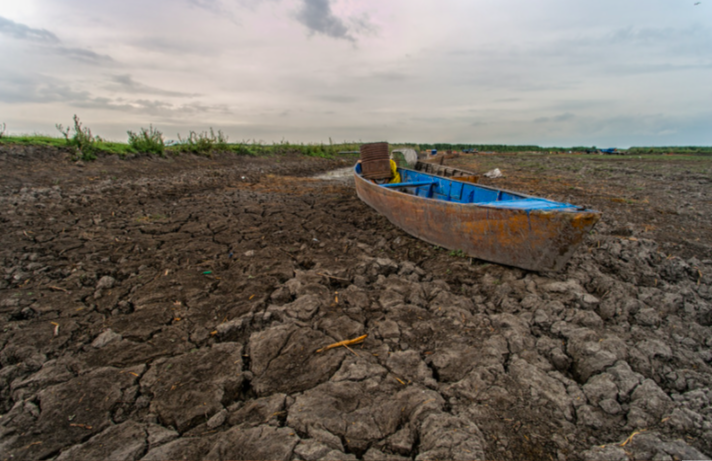
1.5-2 Degrees of Conflict: The future of EU external action in cases of climate-induced conflict
20 September, 2021
“Global warming is a security threat”, former UN Secretary General Kofi suggested. Data indicate that over 40% of intrastate conflicts in the last 60 years have been partially driven by competition over natural resources. Consequently, 7 out of the 10 countries most impacted by climate change already host or had hosted international peacekeeping missions. Concerns about the resilience of states, including EU member states, against the impacts of climate change are not new. However, in the past, environmental concerns were never considered the primary driver of conflict, and thus peacekeeping missions only marginally acknowledged their relevance. This is about to change and the EU27 will have to amend the manner in which their troops operate on the ground as climate-driven conflicts are likely to be the next big challenge.
New dimensions of responsibility
First, the increase in extreme weather events leads to environmental disasters, to which institutions in fragile states are unable to respond. This further erodes trust in the state, which subsequently become even less capable of mediating different parts in the conflict. Thus, the potential for conflict escalation increases constantly. This is especially problematic in regions where EU has a clear strategic interest, such as Northern Africa and the Mediterranean Basin. With limited resources being allocated for eventual peacekeeping operations, the foreseeable increase in the number of conflicts, corroborated with the decrease in state capacity will put a strain on an already pressured system. With regions where many countries already faced the reality of collapsing institutions, such as the Sahel, being under the scrutiny of large missions led by the EEAS, it is unlikely that the future turbulence augmented by climate change will avoid EU interests.
Second, climate change is likely to affect the ability of local government to support the peacekeeping operations. The ultimate objective of peacebuilding is to promote social and economic stability, preconditions for avoiding the resurgence of conflict. However, EU-led missions cannot manage such a transition in the absence of coherent support coming from the local institutions. For example, climate-change induced land degradation in Mali has destroyed any legitimacy of the actual governance structure, which in turn eroded the acquiescence to the power-sharing agreements. This problem is structural, as the EU cannot support endless missions in the absence of growing popular support. Such international actions can only be conducted, in the long-term, if there is a minimal demand for them. However, as previously mentioned, climate change affects the exact pillars of trust that could facilitate the establishment of legitimacy for EU or at least the EEAS mission with the local population.
Overall, these two main points show that climate-induced conflicts are likely to be a completely different experience from the wars to which the EU foreign policymakers are accustomed. This will imply that creating a new framework of operation will be necessary: a new method of supporting peacekeeping, nation-building and institutional design that is more resilient and can adapt to the shocks which are probably going to come as a result of natural disasters and their associated consequences. While this is not to argue that previous experiences of the EEAS are to be ignored, it is clear that the EU is currently not prepared to deal with situations that are so closely tied to natural resource consumption patterns.
What is to be done?
There is no one-size fits all measure that would decrease the risks faced by EEAS missions in responding to conflicts driven by climate change. However, a couple of points need to be stressed out: EU27 corps should be made aware of the impact of climate change on the security environment of a given conflict. Currently, actors are only informed about the political and military history of a conflict, without emphasis on the environmental background.
Furthermore, EU-led missions must learn from the experience of other international organizations such as the UN that are not directly responsible with the conflict, but with the sustainable development of the region. In this way, cross-sectoral endeavours might lead to a proper balance between the need for an immediate response and the desire for long-term stability in climate change-driven conflicts. Cooperating more closely with the UN might also be a strategic avenue for the EU as their peacekeeping missions in countries such as Somalia have already had to deal with the effects of climate-change of existing conflicts.
Conclusions
Climate change is not going anywhere; neither are intrastate conflicts. We should make sure the former does not dimmish our ability to deal with the latter. However, this is easier said than done, as currently the levels of uncertainty are too high to allow policymakers to design clear pathways towards dealing with conflicts driven by climate change. Nevertheless, the EU needs to act even in the presence of uncertainty; this is because many of the regions which are currently central for missions of the EEAS are likely to be hotspots of climate-induced conflicts. Preparing troops for the new realities of conflicts driven by resource consumption, facilitating the design of more resilient institutions, as well as focusing on gaining the hearts and minds of locals are essential points in dealing with these new situations.